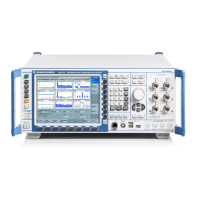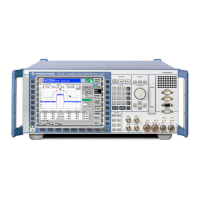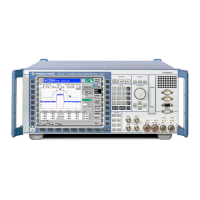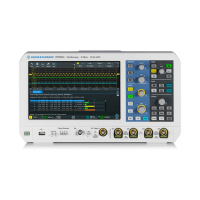Basic Instrument Functions
R&S
®
CMW500
93User Manual 1173.9463.02 ─ 06
● For a Pseudorandom (RRAN) Test, the R&S CMW500 generates a pseudo-random
bit sequence (PRBS) which is first written to the RAM and then read. The
R&S CMW500 checks whether the read PRBS is equal to the generated PRBS.
An address line test is generally faster than a PRAN test. Notice that a failed address line
test does not necessarily prove that two address lines are connected; the problem may
be due to one of the other components involved in data transmission and storage.
Download Test
The R&S CMW500 loads program data into a DSP or FPGA module and verifies that the
module responds properly.
EEprom Test
The R&S CMW500 verifies that the I2C EEprom data of the board is well-formed (i.e. the
syntax is correct, the contents are logically compatible). If no access to the EEprom data
is possible, the board is not displayed in the Selftest dialog.
An EEprom test is provided for all modules.
Driver Init Test
The R&S CMW500 checks whether the operating system has properly initialized the
hardware driver for a specific board.
If driver initalization failed, or if the board is defective, the "Driver Init Test" is the only
board test shown. The test status is "failed". Contact your Rohde & Schwarz service
representative for assistance.
Temperature Test
The R&S CMW500 measures the temperature at different test points on a board and
compares the measured "Value" to the "Max" temperature limit.
●
A value below the "Max" limit means that the board operates under acceptable tem-
perature conditions. The board test is passed.
●
A value below the "Max" limit causes a failed temperature test.
Setup Dialog
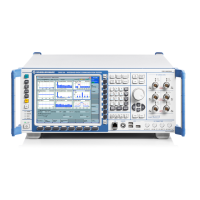
